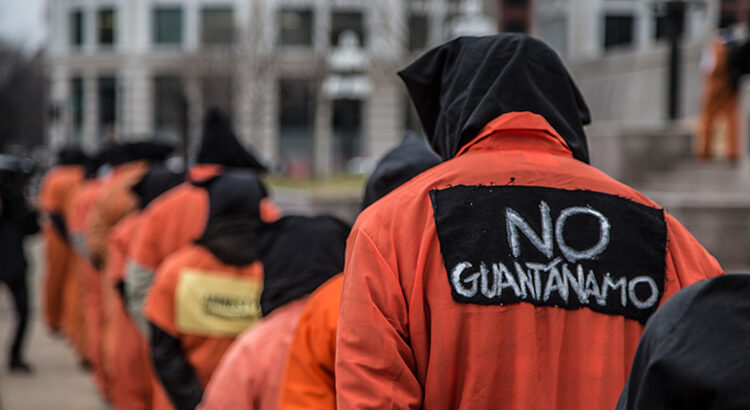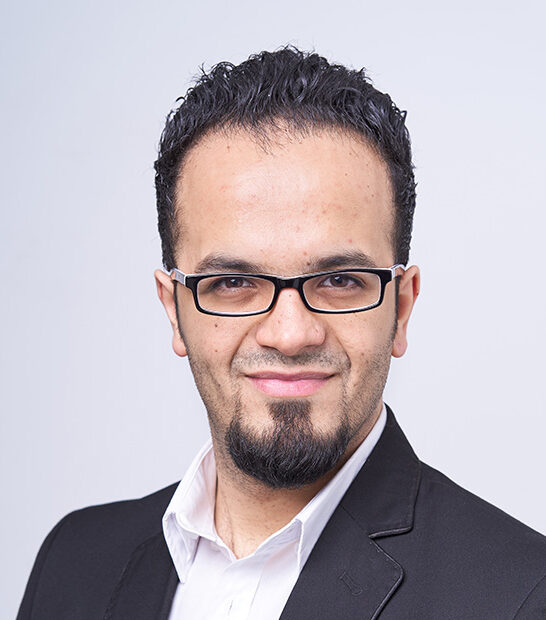Despite previous European calls for the US to close Guantanamo Bay detention camp, established twenty years ago, several European countries are using similar de facto detention camps in Syria. This blog-post argues that detention camps controlled by Kurdish forces in northeast Syria are a security risk rather than a solution. Aside from humanitarian and legal arguments usually made in this context, recent developments in northeast Syria show that Islamic State of Iraq and Syria (ISIS) is regrouping, illustrated by its high scale attack on the Ghweran prison in Al-Hasaka, in January 2022.
Since ISIS’s military defeat in 2019, the east-Euphrates region in Syria has been controlled by the Autonomous Administration of North and East Syria (AANES) and its official military forces, the Syrian Democratic Forces (SDF). According to a UN report, 64,000 people are being held in SDF administrated Al-Hol detention camp, which is the largest, but not the only, detention camp for ISIS-detainees in northeast Syria. Over 80 percent of detainees are women and children, nearly half of them are Iraqi, 37 percent are Syrian, and 15 percent have a foreign nationality. By the end of the battles in March 2019, Kurdish officials said they captured 800 Europeans Jihadists. Although these numbers are difficult to verify, the number of European Jihadists would have been at least around 430 fighters, together with at least 700 European children by the end of 2019.
Guantánamo-like prisons
The UN’s special rapporteur for human rights, Fionnula Ní Aoláin, described the Syrian detention camps as a „European Guantánamo.“ The American idea behind Guantánamo was to detain suspects believed to be linked to the 9/11 attacks. Because it is located in a US-controlled territory in Cuba, and not on US soil, detainees in Guantánamo were not granted rights under the US Constitution. The analogy used by UN officials builds on the fact that detainees in northeast Syria are held without charges and denied any legal rights. However, those detention camps differ in two aspects. First, they are not directly controlled by European states like the US controls Guantánamo. Second, and despite individual accusations of torturing detainees, there is no evidence of SDF systematic torture, or what was called “enhanced interrogation techniques” in Guantánamo.
Controversial positions on repatriating Jihadists
Earlier in 2021, UN experts urged 57 states to repatriate their nationals, particularly women and children, from the „inhumane and degrading“ detention camps. Kurdish officials have repeatedly asked European countries to take their nationals back; an issue which was mainly ignored by policy makers in Europe. Regarding repatriation, European countries have been reluctant to repatriate fighters, but willing to repatriate orphans; although less willing in regard to children with mothers. So far, there has been no political decision on repatriation in any European country, rather individual detainees challenging their countries’ delay of repatriation.
Commentaries on repatriating European Jihadists and their families were mainly rooted in legal and humanitarian arguments. Some pointed out the illegality of depriving European detainees of the right to repatriation, others focused on the critical consequences of certain “special” regulations; such as the loss of citizenship law in Germany and the special administrative measures in France. However, legal and humanitarian criticisms of European policies in regard to repatriation focused on women and children detainees. Obviously, bringing back dedicated Jihadists is an unpopular suggestion. However, and without devaluing the normative moral arguments, keeping European Jihadists in Guantánamo-like prisons in Syria poses two security risks: the short-term risk involves Jihadists fleeing the poorly-maintained prisons; the long-term risk comes from the possibility that the prisons will be controlled by other actors if the SDF loses control of the region.
Short-term risk: Jihadists escaping detention
On Thursday the 20th of January, a group of ISIS-affiliated prisoners succeeded in controlling the Ghweran prison in Al-Hasaka, northeast Syria. The insurrection inside the prison was in conjunction with a car bomb plotted by ISIS cells from the outside in a prison break attempt. By Friday the 21st, ISIS controlled about a quarter of the prison.
ISIS media agency, A’maq, claimed they “freed” 800 prisoners and killed 200 prisons’ guards, including the prison warden. On the other hand, the SDF claimed in a video they captured the escapees and regained control of the prison. This seemed to be far from accurate as the fighting between ISIS and SDF spilled into the surrounding neighborhoods, leaving dozens of dead bodies from both sides and local civilians. On Monday the 24th, the SDF imposed a 7-day curfew in Al-Hasaka to avoid a further spread of ISIS fighters. Reports showed footage of convoys of residents fleeing the clashes.
While it is not the first time that ISIS-detainees try to stage prison escapes, it is definitely the most significant so far. In March 2020, a similar, but less successful attempt was made, but SDF claimed that no prisoners escaped, though control of the facility was lost for more than 24 hours. Furthermore, the latest attack on Friday the 24th coincided with another ISIS attack in Diyala, Iraq, which killed 11 Iraqi security force members.
The attack on the Ghweran prison is mostly motivated by a shortage of ISIS fighters. Additionally, the SDF has captured high-level ISIS leaders; many of them held in Ghweran prison. The insurrection is a warning sign that ISIS is regrouping, starting by targeting detention centers.
It is not clear yet how many foreign fighters, particularly Europeans, were set free during the attack on Ghweran prison. However, whether this escape attempt succeeded or not, it likely will not be the last one. Other ISIS cells will be encouraged to attack more detention centers; particularly Al-Hol camp, which is only 42 km away from Al-Hasaka.
Long-Term Risk: AANES Loss of Territory
AANES accused Turkey of being behind the latest insurrection in Ghweran prison. Other speakers in the SDF also held the Syrian government in Damascus responsible for supporting the insurrection to destabilize the Kurdish-autonomous area. These accusations reflect the fraught relationships between AANES‘ and their main antagonists in the region. While the Iraqi Kurds recently finished a two-meter deep border trench along their borders with AANES, Kurdish militias in Turkey remain AANES‘ only possible supporters in the region.
Given their lack of wider support and general strategic instability, there is a chance that AANES could lose the entirety, or parts, of its territory to the Syrian government or to Turkish-backed militias in the Syrian opposition. If Damascus were to regain the area, the Syrian government will claim jurisdiction over the European Jihadists as they seized control over a Syrian territory. In such a case, it is doubtful that they will be guaranteed a trial; or even worse, European Jihadists could be instrumentalized in regional conflicts.
The second possibility is losing territory to Turkish-backed militias in the Syrian opposition. This could happen even before a full American withdrawal from northeast Syria. Indeed, it already started in 2018 when Turkey announced Operation Olive Branch, pushing the SDF to the east and out of the Kurdish city of Afrin. It is not clear what will happen if the NATO ally seizes control of detained European Jihadists in northeast Syria. However, in such an operation much depends on force deployments and the reality of ‚boots on the ground‘. While the Turkish army might enjoy more army discipline, the Syrian opposition militias are less organized and have a complicated relation with ISIS fighters. Some in the Syrian opposition consider ISIS enemies, as the two sides clashed for years. Others in the Syrian opposition militias consider ISIS to be „Muhajireen,“ which means a Muslim fighter who migrated to support a fellow Muslim. Their sympathy with ISIS fighters could compel them to set them free.
Conclusion
After the insurrection in Ghweran, AANES officials renewed their call on all nations to repatriate foreign fighters and establish special trials for Syrian and Iraqi prisoners. While European countries are still avoiding a full repatriation, Turkey and Syria would certainly oppose any legal arrangements that would formalize diplomatic relations with Syrian Kurds.
This political complication leaves the issue of long-term, no-trial detention camps as the easy choice for the actors involved (apart from the AANES). However, the possibility of AANES’ losing of territory, or of ISIS regrouping and attacking more prisons, should be taken into consideration.
If already escaped, or yet to escape in future operations, European Jihadists will either continue their “Jihad” in Syria or they will be heading back home. It is also possible that they would take the Iraq-Iran route to Afghanistan, as the window of opportunity is opening up for Jihadists after the latest Western withdrawal from Afghanistan. If European Jihadists will fight in Syria or migrate to other fronts, it is likely that more of them may be killed. However, if they went back to Europe, directly or after another round of fighting, they would be certainly a security risk to Europe.
It is important to see that the outsourcing of security risks fails to address global problems, such as the repatriation of European Jihadists. The failure of this approach also puts the Syrian people at risk, as seen recently in the new wave of displacement from Al-Hasaka. European countries must set an example by completing the repatriation of all European jihadists, putting them on trial for their crimes against Syrians and Iraqis, and stop supporting AANES in detaining Syrian and foreign citizens without trial.


